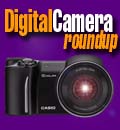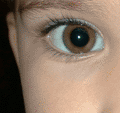 Most readers of this magazine already know something about digital cameras. You are experts and read our publication because you enjoy reading about digital cameras and what people do with them, just as car guys enjoy getting their copies of Road & Track or Automobile Magazine. If you are among those experts, this installment of my column is not for you because I'll discuss some of the very basics of digital imaging. Why am I doing this? Because no matter where I go, I run into people who really don't have any clue what a digital camera is or how they work. And I am talking about educated people here, the kind who know all about computers and the Internet, just not about digital cameras.
Most readers of this magazine already know something about digital cameras. You are experts and read our publication because you enjoy reading about digital cameras and what people do with them, just as car guys enjoy getting their copies of Road & Track or Automobile Magazine. If you are among those experts, this installment of my column is not for you because I'll discuss some of the very basics of digital imaging. Why am I doing this? Because no matter where I go, I run into people who really don't have any clue what a digital camera is or how they work. And I am talking about educated people here, the kind who know all about computers and the Internet, just not about digital cameras.
I think one of the problems is that digital cameras look exactly like regular cameras. Some consider that a good thing. I do not. Consumers have gotten used to the fact that everything is digital these days. Phone companies are plugging digital wireless service, and the cable guys want you to sign up for digital cable. So you get a new cellphone or pay a few bucks more a month for a digital cable box. Nothing else changes because digital phones and digital cable work just like regular old phones and regular cable.
That's not the case with digital cameras. By making digital cameras look the same as film cameras and by selling them the same way, vendors are doing consumers (and themselves) a big disservice. Digital cameras are not the same as film cameras. They are totally different, and acting as if that weren't so only results in puzzled buyers, overloaded tech support lines, and unnecessarily high product returns. And make no mistake, though I am certain digital cameras are eventually going to replace film cameras, current product returns are high. Reasons most often given: unacceptable battery life, difficulty connecting to a PC, excessively long wait until the camera is ready for the next picture, and complexity of getting hard copy.
Regular readers of this column know that I've harped on these very issues ad nauseam. But these are matters that I feel confident will eventually be resolved. I am much more concerned about the above-mentioned tendency of camera makers to sell digicams the way they sell film cameras. I've discussed this with some vendors, and their general position is that they do that on purpose. They say consumers don't care what technology they use, as long as it does the job. Consumers are comfortable with the long established form factors of the traditional SLR camera and of those handy little point & shoots. Using those same designs on digicams moves product quickly because consumers don't realize they're buying a completely different product, one that may require a lot of education and a lot of handholding, and one that also demands a fair amount of computer savvy.
I can't count the times I've had the following conversation:
"Hey, nice camera. What is it?"
"It's a (fill in brand name) digital camera."
"Digital camera? Really? How does it work?"
"Well, it doesn't need film. It records images on a memory card."
"A memory card? Can I see it?"
I show them the SmartMedia or CompactFlash card.
"The pictures are on that? How many pictures can you put on it?
I explain that the number of pictures you can put on a card depends on the amount of space on the card, the image resolution, and the compression factor.
"Hmmm... How do you get it into the computer?"
I explain that there are many ways, like a direct cable connection, or putting the card into a card reader or card adapter from where it can be accessed like a hard drive.
"Sounds complicated. I don't have a card reader, but I think the kid next door has one. What do I do when the pictures are in the computer?"
I explain that all digital cameras come with some sort of utility and imaging software. Some have their own image retrieval applications, some have plug-ins for popular imaging software like Photoshop, some supply TWAIN drivers, and some come with customized versions of third party imaging software. At that point, my audience usually looks dazed and confused.
"Okay, I get the point. But how do I print the pictures?"
I explain that that's a bit of a weak area, that there's software that can do amazing things with digital images if you know how to use it. I also explain that you can get pictures from just about any inkjet printer.
"I have one! But do the pictures look as good as the prints I get from the One Hour photo store?"
I explain that they can look that good, but only if you have a special photo printer or a printer that has a "photo-realistic" mode and prints on expensive special paper.
To be honest, there are probably people who can make a much better sales pitch for digicams. I just answer people's questions the way I see it. Though I love digital cameras and make every effort to point out their many advantages, I'd feel like a con man if I didn't also point out the many obstacles. That's why the people who inquire about my digicam often seem a bit disillusioned by the time I am through answering their questions. (Of course, there are also those who thrive on technological challenges and head straight for the next electronics store to pick one up after I talk to them.)
To me, the bottom line is that digital cameras are really not "cameras" at all. True, they take pictures just like a film camera, and they use lenses, but that's where the similarity ends. Beyond that, digital cameras are relatively complex components, or extensions, of a computer imaging system. Treating them like anything less than that makes no sense to me. Doing that is like saying a word processor is just like a manual typewriter because both are used to create documents. That approach resulted in a near-revolt of hundreds of thousands of office workers in the 1980s, and perhaps tens of thousands of early retirements.
So, manufacturers of digital cameras, do the right thing. Don't make digicams that look just like film cameras and pretend they work the same. Come up with distinctive new designs (remember: form follows function). Educate the consumer. Fix the bugs that bedevil today's generation of digicams. Make them easier to use. It's a win-win situation.








